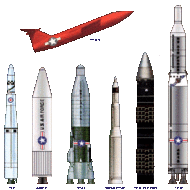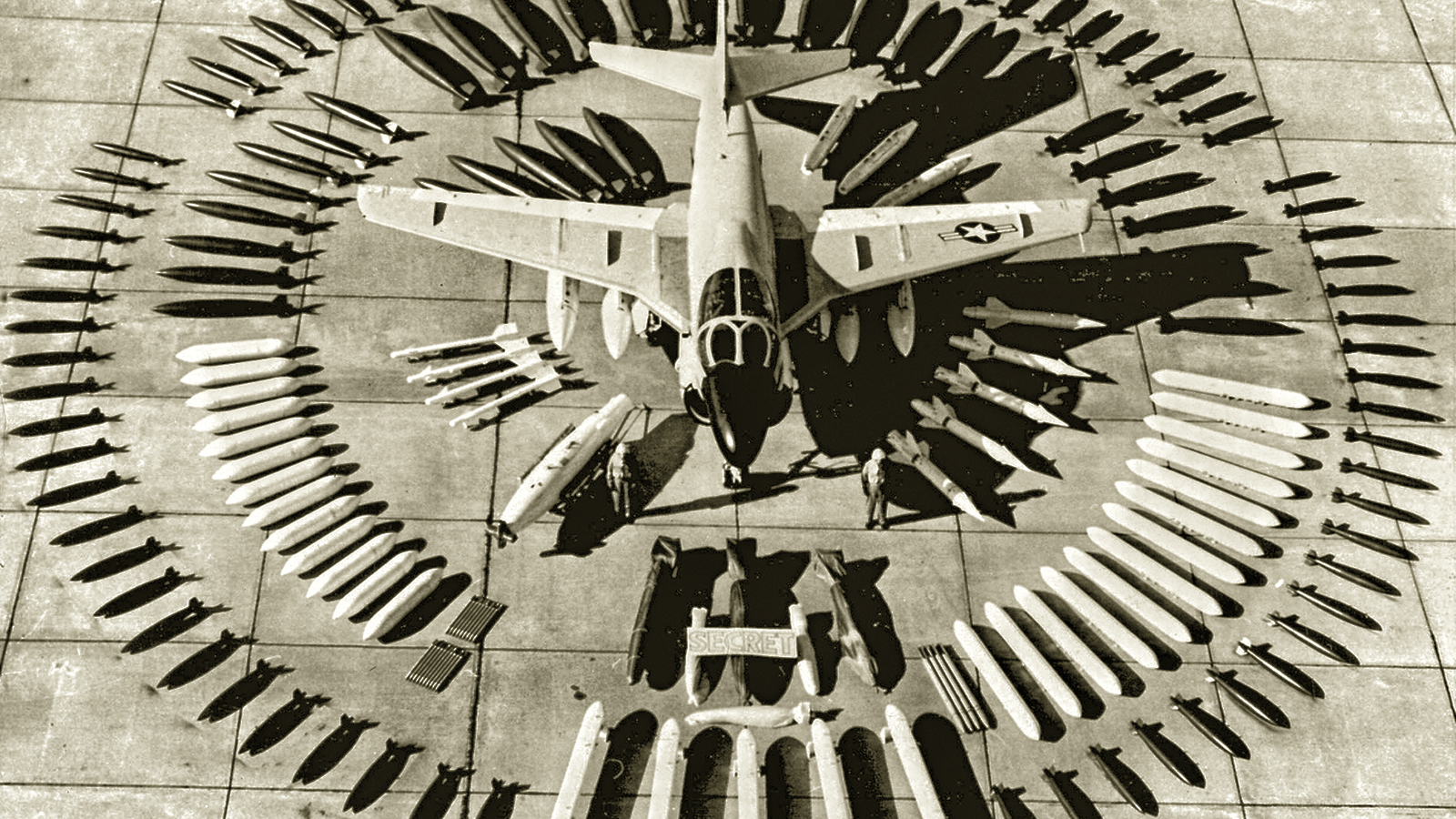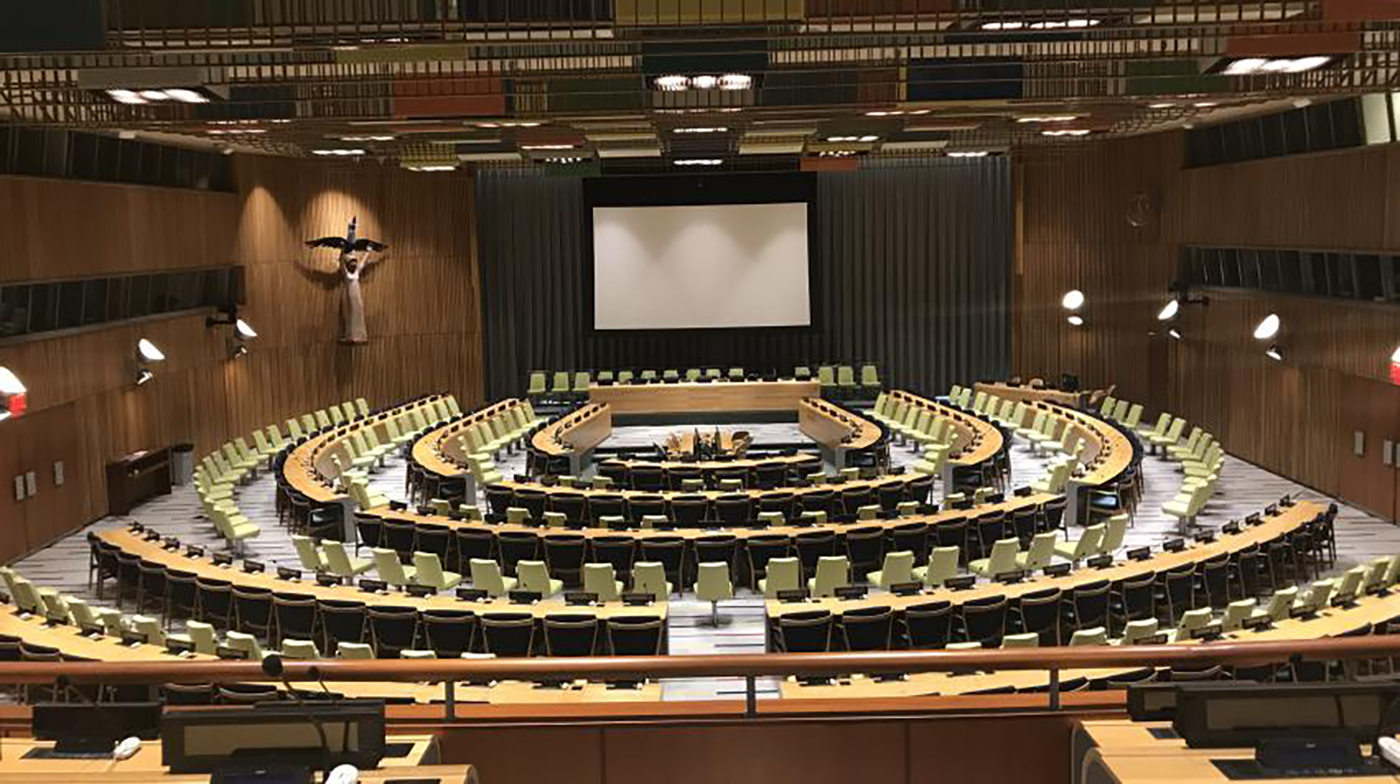Aegis Cruiser see Missile Defense
Alert Status
The readiness level of a weapon or weapons system. Throughout the Cold War, US and Soviet nuclear forces were maintained on high alert, a policy that has changed little to this day.
Air Based Laser see Missile Defense
Anti-Satellite Weapons (ASATs)
Weapons capable of destroying satellites. These can be based on earth or in outer space, and may be explosive tipped missiles, directed energy weapons (such as lasers), or kinetic kill vehicles, which would disable satellites by hitting them at a high rate of speed.
Arms Control
Any international agreement that limits the type and number of weapons or armed forces. Arms control may take the form of formal treaties, negotiated agreements, or implicit understandings. Some analysts, including many members of the current Bush administration, are not in favor of arms control in general, as they believe that there is no way to stop others from cheating.(1) However, others argue that arms control agreements have played an important role in world security.(2)
ASAT see Anti-Satellite Weapons.
Asymmetrical Warfare
Countering an adversarys strengths by focusing on its weaknesses. This allows a weaker opponent to level the playing field by using unorthodox means, such as the use of chemical weapons. Pentagon planners view this as one of the greatest threats to United States security.(3)
Atomic Bomb
A powerful bomb that derives its explosive force from the sudden release of huge amounts of atomic energy.(4) The United States is the only country to have used atom bombs as weapons of war. Atomic weapons can be made in several different ways, utilizing different materials and designs:
Ballistic Missile
A rocket-powered delivery vehicle that has some form of guidance system, and that travels a large portion of its flight in a ballistic (free-fall) trajectory. For some longer range missiles, the flight takes the missile and warhead out of the atmosphere, and a re-entry vehicle (RV) brings the warhead back in.
|
Submarine Launched Ballistic Missile (SLBM) |
|
Short Range Ballistic Missile (SRBM) |
More information on missile terminology is available at https://www.cdiss.org/btablec.htm.
Ballistic Missile Defense (BMD)
A broad term to describe the technologies and policies used in defense against ballistic missiles. See Missile Defense
BMDO Ballistic Missile Defense Organization
The organization responsible for overseeing programs related to ballistic missile defense. The BMDO was created from the SDIO the Strategic Defense Initiative Organization which was formed during the Reagan administration.(5)
Boost Phase
The first phase of a ballistic missile’s trajectory as the missile rises through the air. See Missile Defense
Breakout
Breakout refers to the violation, either covertly (through cheating) or overtly, of an abolition agreement by an aggressor that then proceeds, as the sole possessor of nuclear arms, to exert its will upon the world. Fear of breakout is one of the main obstacles faced by those who seek to eliminate nuclear weapons, and there are several proposals for how to prevent the possibility of strategically significant breakout (see Virtual Nuclear Arsenals.)
Brilliant Pebbles
Conceived during the Reagan administration, the brilliant pebbles program envisioned a field of several thousand small orbiting satellites with anti-missile weapons capable of destroying enemy ICBMs. Originally touted for their low cost and ability to operate autonomously (hence the term “brilliant”), this program was eventually scrapped.(6) However, the Bush administration has proposed reviving the program with space based interceptor missiles.
Canberra Commission
An international group of international, high-ranking civil and military leaders convened by the Australian government in November 1995 to study the issue of nuclear weapons and “propose practical steps towards a nuclear weapon free world.” In their report, the group concludes that nuclear weapons “pose an intolerable threat to all humanity and its habitat,” and “diminish the security of all states.” The Commission proposed a series of steps to be taken towards the elimination of nuclear weapons and called upon the nuclear weapons states to follow them. Visit the home page of the Canberra Commission for more details and the full report.
Countermeasures
In the context of missile defense, countermeasures are decoys released by a missile to confuse potential interceptors and radar. These can be as simple as “chaff” – a cloud of debris, or can be more sophisticated as in a group of identical Mylar balloons, each heated to different temperatures and with different motions, designed to confuse interceptor sensors as to which balloons contain real warheads. The Union of Concerned Scientists claims that intermediate phase missile defenses will never be truly effective, as any nation capable of launching an ICBM can easily employ countermeasures as well.(7)
Counterforce
A nuclear doctrine in which weapons are directed at the enemies nuclear missiles and military forces, in order to pre-empt an opponents strike.
Countervalue
A nuclear doctrine in which weapons are directed at the enemies cities and industrial centers in order to maintain the capacity to inflict unacceptable losses.
Cruise Missile
An unmanned low-flying drone powered by jet and designed to penetrate enemy air defenses. Cruise Missiles can be launched from the ground, a ship or an airplane, and use computerized terrain-following guidance systems to find their targets.
The Cuban Missile Crisis
A tense thirteen-day standoff in October 1962, the Crisis began when US intelligence determined that the Soviet Union had placed nuclear-armed missiles in Cuba. President Kennedy decided against responding with air strikes, and after a week long blockade and strained negotiations the Soviets removed the missiles in return for a secret US promise to remove its missiles from Turkey. The Crisis is generally considered the closest that the superpowers ever came to nuclear war.
Delivery Vehicle
The component of a nuclear weapon system that trans-ports a nuclear device to its target for instance, a missile or a bomber.
Deployment
Process of getting weapons and forces in combat-ready positions.
Deterrence
The doctrine of deterrence is based upon a nations ability to inflict unacceptable damage to any adversary such that it will deter them from attack. Some analysts hold that rogue state dictators are not affected by deterrence, but this is not confirmed by evidence and remains speculation. Also see Mutually Assured Destruction.
Deuterium
An isotope of hydrogen, whose nucleus contains one proton and one neutron, double the weight of a standard hydrogen atom. Deuterium is used as fuel in fusion reactions.
Dual-use Technology
A technology with both military and civilian applications, a nuclear reactor, for example. It can be difficult to certify that technologies designed or sold for civilian uses are not put to secret military use.
Electromagnetic Pulse (EMP)
Electromagnetic radiation, typically generated by a high-altitude nuclear explosion, which produces damaging current and voltage surges, capable of destroying or disabling electronics within a certain range. EMP is considered a threat to military and civilian communications and technology, and any future missile defense will need to account for EMP.
Exo-atmospheric Kill Vehicle (EKV) see Missile Defense
First Strike
A preemptive attack against an enemy, especially one using nuclear weapons against an enemy armed with nuclear weapons.
Fissile Material
The essential fuel of nuclear weapons and nuclear reactors. Typically the term “fissile material” refers to highly en-riched uranium (HEU), low-enriched uranium (LEU), or plutonium. These materials are termed “fissile” because they can be split into two roughly equal-mass fragments when struck by a neutron of even low energies. When a large enough mass of either material is assembled, a self-sustaining chain reaction results after the first fission is produced.
In nuclear weapons, the fission energy is released all at once to produce a violent explosion.
Fissile Material Inventory
A proposed worldwide inventory of fissile material aimed at better maintaining control over nuclear material and guarding against its transfer to terrorists or rogue states. Further steps to stem proliferation could include a ban on new production of fissile material. The UN Conference on Disarmament has begun negotiations on a Fissile Material Cut-off Treaty to address this issue.(8)
Global Positioning System (GPS)
A group of 24 satellites that allows an individual or vehicle equipped with a GPS receiver to navigate with great precision.
Heavy Water
Water containing a large portion of “heavy” hydrogen, or deuterium (a hydrogen isotope with one extra neutron), which is used in nuclear reactors.
Highly Enriched Uranium (HEU)
A refined uranium source consisting of more than 20% Uranium-235, but usually around 90%. In nature, the percentage is normally 0.7% Uranium must be enriched to make a viable atomic explosion possible.
Hydrogen Bomb see Atomic Bomb, fusion weapons
Intercontinental Ballistic Missile (ICBM)
A long range ballistic missile that can travel over 6000km. The first ICBMs were tested by the Soviet Union and the United States in 1957, and they remain the backbone of the land-based arm of the strategic nuclear triad. United States ICBM models have included the Atlas, the Minuteman, the Titan, and the Peacekeeper (MX).
Intermediate Range Ballistic Missile (IRBM) – see Ballistic Missile
International Court of Justice (ICJ)
Also called the World Court, the ICJ is the top judicial organ of the United Nations. It began work in 1946 and the is composed of 15 justices, serving nine-year terms.(9) In 1996, the ICJ ruled on the legality of nuclear weapons under international law
International Atomic Energy Agency (IAEA)
An agency of the United Nations specializing in nuclear safety. Founded in 1957, the IAEA regulates both the peaceful and military uses of nuclear energy. The agency is instrumental in nuclear non-proliferation efforts, as it monitors possible nuclear test explosions and conducts investigations of nuclear power plants to ensure that no fuel is being diverted for military uses.
Kilotons (kt)
In nuclear terminology, a measurement of the explosive power of a nuclear explosion. This is measure in relation to the explosive power of an equivalent amount of TNT. For example, a 15kt nuclear explosion has the explosive power equivalent to 15,000 tons of TNT. The United States and Russi have produced weapons covering a wide range of yields, and currently deployed weapons differ significantly in yields; for instance, the United States UGM-133A and the UGM-93A have yields of 475kt and 100kt, respectively, while the Russian SS-N-20 and SS-18 have yields of 100kt and 750kt, respectively.(10)
Land-Based Interceptor Rockets see Missile Defense
Launch-On-Warning or Hair Trigger Alert
A policy of retaliation upon notification that an enemy attack is in progress, but before hostile forces or bombs reach friendly soil. This strategy arose as the result of the fear that a countrys nuclear arsenal could be destroyed by an unforeseen first strike, thus preempting that nations retaliatory capability. In the case of a perceived Russian ICBM attack, United States leaders would have less than 15 minutes to decide whether or not to launch a counterattack.(11)
Manhattan Project
A top-secret program conducted by the United States during World War II to produce a nuclear weapon. Begun in 1941 as a response to the bomb program in Germany, the project employed hundreds of the top scientists in the world, including J. Robert Oppenheimer, director of the Los Alamos laboratory, where the first bomb was created. On July 16, 1945, the first atomic device was successfully tested at Alamogordo, New Mexico. The project eventually produced a total of four bombs, including those used at Hiroshima and Nagasaki. According to the Brookings Institution, the cost of the project, in 1996 dollars, was $20 billion.
Medium Range Ballistic Missile (MRBM) see Missile Defense
Megatons (Mt)
In nuclear terminology, a unit of measuring the power of a nuclear blast, equivalent to 1 million tons of TNT, or 1,000 kilotons. This level of power can only be obtained through a thermonuclear or hydrogen blast.
Minimum Deterrence
A nuclear posture in which states maintain a small nuclear force in order to deter nuclear aggression. Since only a few weapons (usually cited at between 10 and 200) are required to inflict unacceptable losses against would-be aggressors, a minimum deterrent arsenal can be relatively small, with an emphasis placed on stability and survivability. China, Pakistan, and India maintain a minimum deterrent policy, accompanied by a doctrine of “No First Use.”
Missile Defense
A system designed to intercept incoming missiles. The Soviet Union and the United States are permitted under the ABM Treaty to have limited missile defense systems around one limited region; Russia still has one (of doubtful effectiveness and repair) around Moscow, and the United States briefly had one around an ICBM site in North Dakota. The first national missile defense was proposed by Reagan the Strategic Defense Inititiative, or SDI. That plan was the precursor of todays national missile defense proposals. There are many different types of proposed missile defense systems and components for these systems. However, none has proven consistently successful in realistic testing situations, and the vast majority are still conceptual models.
|
Models:
Components:
|
Mutually Assured Destruction (MAD)
A guarantee made by the United States and Russia that each state would maintain an arsenal large enough that in the event of an attack each nation would be destroyed. Because the threat of mutual destruction is so great, this strategy claims to deter the use of nuclear weapons in the first place.
National Ignition Facility (NIF)
The worlds largest laser facility, the NIF will focus the light of 192 lasers onto a BB-sized target containing nuclear fuel to create fusion conditions, on a minute scale, otherwise found only in the sun or detonated nuclear weapons. Housed at Lawrence Livermore Laboratories in California, the NIF, which will be fully functional near the end of this decade, will be used in the Stockpile Stewardship Program to help verify the reliability of the nuclear stockpile without further explosive testing.(15) However, some critics have alleged that because of its advanced technology, the NIF could actually be used to develop new nuclear weapon designs.(16)
National Missile Defense (NMD)
Defense against ballistic missiles designed to protect the territory of an entire nation. Currently, there is not a consensus as to how this might be accomplished but sea-based, ground-based, and space-based models are under discussion. The plan closest to deployment is exclusively ground-based.
Negative Security Assurance (NSA)
An assurance offered by nuclear weapon states that they will not use or threaten to use nuclear weapons against non-nuclear weapon states.
Neutron Bomb
A fusion bomb designed to produce great numbers of neutrons, but little blast, thus destroying human life but preserving structures and terrain. It has very small fission primary (if any) and no U-238 shell. The bomb, originally designed by the US, was to be used if Russia invaded West Germany. It would kill the invaders without destroying the country it was intended to save. When President Jimmy Carter made the neutron bomb public, he was criticized for developing a bomb that would target people, not buildings. The US neutron bomb program was eventually terminated.
New Agenda Coalition
A coalition of seven non-nuclear middle power states that united in 1998 to urge the nuclear weapons states to fulfill their commitments under the Nuclear Non-Proliferation Treaty (NPT) and eliminate nuclear weapons. The countries are Brazil, Egypt, Mexico, Ireland, New Zealand, South Africa and Sweden.
No-First-Use
Under this policy, a nuclear weapons state promises never to use nuclear weapons unless attacked first by a nuclear strike. The policy is derived from the conviction that nuclear weapons should be dedicated solely to the mission of deterring other nuclear weapons states, and perhaps others, from attacking. Of the five recognized nuclear states, only China has consistently enunciated a universal no-first-use pledge. The United States, Britain, France, and Russia have pledged to not use nuclear weapons first against a non-nuclear weapons state, unless attacked by that state in conjunction with another state possessing nuclear weapons. However, the Presidential Decision Directive issued in November 1997 by President Bill Clinton apparently conflicts with that pledge, since it reportedly authorizes the use of nuclear weapons against rogue states with biological or chemical weapons.(17) See Negative Security Assurance. More information is available at https://www.stimson.org/pubs/zeronuke/shenfin.htm.
Nuclear freeze
A proposal by peace activists in the 1980s that the U S. and the Soviet Union agree to stop the unchecked escalation of the nuclear arms race.
Nuclear Weapons Convention (NWC)
Based on the biological and chemical weapons conventions, a nuclear weapons convention would be a treaty that mandates elimination of all nuclear weapons and provides a framework under which this could be accomplished and verified. In 1997, the Lawyers Committee on Nuclear Policy, in conjunction with many other experts, drafted a Model Nuclear Weapons Convention (MNWC), which can be accessed at https://www.lcnp.org/mnwc/.
Nunn-Lugar / Cooperative Threat Reduction Programs
A set of programs initiated by Senators Sam Nunn (D-Ga) and Richard Lugar (R-IN) in 1992 which provides United States financial and technical assistance to Russia to help it downgrade its nuclear weapons program in a safer and more controlled manner. Specific programs have included funds to destroy nuclear warheads and financial support for Russian nuclear scientists. These programs help to lessen the danger of the proliferation of nuclear materials or secrets and also help to reduce environmental and security dangers posed by deteriorating nuclear facilities.
Patriot Missile
United States short-range non-nuclear interceptor. Patriot missiles were highly touted in the Gulf War, but later reports indicated that they were fairly unsuccessful in intercepting Iraqi Scud missiles. See Missile Defense.
Peaceful Nuclear Explosive (PNE)
A nuclear device designed for peaceful purposes, such as digging trenches or other civilian projects. In practice PNEs do not differ greatly from bombs, and can be easily converted to serve military objectives.
Plutonium Reprocessing
The process of separating plutonium from irradiated uranium. Can be used to create components for nuclear weapons from spent reactor fuel.
Proliferation
There are two types of nuclear proliferation: vertical proliferation in which nations that already possess nuclear weapons stockpile additional weapons; and horizontal proliferation in which one state after another comes into possession of some form of nuclear weaponry and with it the potential to launch a nuclear attack on other states. Arms control treaties such as START and INF are designed to stem vertical proliferation, while the Nuclear Non-Proliferation Treaty and the Comprehensive Test Ban Treaty are designed primarily to stop horizontal proliferation though they also seek to prevent vertical proliferation and the NPT commits the nuclear states to eventual total disarmament.
SCUD Missiles
Commonly exported short-range ballistic missiles, orig-inally produced in Russia, but now produced in several nations. Most SCUD missiles have a range of less than 800km and are thus classified as Short Range Ballistic Missiles (SRMBs)
Short Range Ballistic Missile (SRBM) See Ballistic Missile
Space Based Missile Defense See Missile Defense
Space Weaponization
The act of putting weapons in space. Currently, although satellites regularly use space for military reconnaissance, and though ICBMs may pass through space en route to their final targets, no actual weapons are currently stationed in outer space. Although a precise definition of what constitutes weaponizing space has yet to be agreed on internationally, placing offensive weapons in orbit would surely be construed as such. Some commentators would argue that deploying anti-satellite weapons (ASATs), even if fired from earth, could be considered weaponizing space.(18)
Stockpile Stewardship Program (SSP)
A program under the jurisdiction of the Department of Energy designed to maintain confidence in the United States nuclear stockpile. Many proponents of the Comprehensive Test Ban Treaty claim that the SSPs combination of subcritical testing and computer simulation allows safe and reliable control of the stockpile without need for additional nuclear testing. Some critics of the SSP argue that its advanced technologies could be used to create new nuclear weapons designs. Others allege that even with this program, explosive nuclear testing would be necessary to ensure the reliability of the stockpile.(19) Also see LAWS White Paper, chapter V, at https://www.lawscns.org/speeches/ctbt_whitepaper.pdf (dnloadable PDF Document)
Strategic Defense Initiative (SDI)
Dubbed “Star Wars” by its critics, SDI was an ambitious plan first proposed in a 1983 speech by Ronald Reagan with the aim of creating a defense against ballistic missiles. It was to use high-tech, space-based weaponry and in theory could not only protect the United States from Soviet missiles but could eventually even help to make nuclear weapons obsolete. However, despite billions of dollars spent on the project, neither of these goals was achieved. The idea has not died however, and many of the current missile defense proposals draw on concepts first formulated for SDI.
Strategic Nuclear Weapons
Strategic refers to a class of nuclear weapons that are generally high yield (powerful) and mounted on long range missiles. Their immense destructive capacity means that they are not used merely as a powerful weapon in a war, but rather their use is threatened to gain leverage in strategic bargaining with rivals. Most nuclear weapons in the world are now of this type; in fact the United States and Russia have dismantled or are in the process of dismantling most of their non-strategic forces.
SSBN Ship Submersible Ballistic Nuclear
An official tem used to describe nuclear-powered submarines that carry nuclear weapons.
Subcritical Test
A test of nuclear weapons using high explosives and nuclear weapon materials to gain important data without conducting nuclear explosions that would be banned by the Comprehensive Test Ban Treaty or violate a moratorium on nuclear tests. The test differs from a traditional nuclear weapon test because it is halted before the plutonium and/or uranium can reach criticality (i.e. sustain a chain reaction). See Stockpile Stewardship
Submarine Launched Ballistic Missile see Ballistic Missiles
Suitcase Bomb
Refers to a nuclear bomb delivered on foot though not necessarily in a suitcase. Because a functional nuclear weapon can be made small enough to fit in a backpack or suitcase, many analysts point to the potential of nuclear attack delivered by terrorists on foot as a major threat.(20)
Survivability
A strategic calculation referring to the ability of a countrys nuclear arsenal (including command and control) to survive a first strike attack and return a retaliatory strike.
Tactical Nuclear Weapons
In contrast to strategic nuclear weapons, so-called tactical nukes are designed for use on the battlefield or in other anti-troop situations. They are typically lower-yield (less powerful) than their strategic brethren, and may be delivered in a variety of manners. Because of their smaller destructive capacity, many planners have felt that they could be used in a war without sparking a full-scale nuclear exchange. However, many experts see this as impossible, and for this reason see tactical nukes as especially destabilizing and dangerous.(21)
Theater Missile Defense – see Missile Defense
Trident
A nuclear-armed submarine capable of carrying up to 192 warheads used by both the United States and Britain.
Tritium
An isotope of hydrogen, with a nucleus of one proton and two neutrons, making it heavier than both hydrogen and another isotope, deuterium. Tritium is used as fuel in fusion reactions.
Variable Yield
A term describing a nuclear warhead which can be set to detonate in different stages and provide different yields. This allows a single warhead to serve as either a strategic or tactical weapon. For example, warheads on the British trident submarine can have a yield of less than 1kt or up to 100kt.
Virtual Nuclear Arsenal (VNAs)
A virtual nuclear arsenal is essentially a state of deep de-alert, codified by international treaty and verified through a web of inspection mechanisms. A VNA treaty would not permit states to maintain assembled weapons, but would allow states to keep disassembled components of nuclear weapons. Advocates argue that this arrangement would create stability by providing a cushion of days or weeks between re-assembly and threat of launch, while maintaining a hedge against cheating, breakout and nuclear aggression.
Warhead
The explosive component of a nuclear weapon system, normally mounted onto the tip of a missile or bomb. Warheads consist of nuclear materials, conventional high explosives, and related firing mechanisms.
Weapons of Mass Destruction
WMD is a term used to describe biological, chemical, and nuclear weapons devices that cause mass and indiscriminate casualties. While there is a near universal consensus that biological and chemical weapons are not viable parts of a nations arsenal, nuclear weapons are often still viewed as “acceptable” components of strategic planning, despite their capabilities for widespread damage.
Yield
A term used to describe the power of a nuclear explosion. Yield is usually measured in comparison to the explosive power of TNT, as in the Hiroshima explosion that had yield of around 15,000 tons of TNT. In the United States arsenal, most strategic warheads have a yield of between 100 and 400kt.
![]()
1. For instance: Shanker, Thom. “White House says the U.S. is not a loner, just choosy” New York Times 7/31/01
2. For instance, see the Union of Concerned Scientists program on International Cooperaton at www.ucsusa.org/index.html and select Issues: International Cooperation.
3. Remarks as Delivered by Secretary of Defense William S. Cohen at the National Convention of the Veterans of Foreign Wars and the Ladies Auxiliary, 8/23/00. “Cohen says Superpower label attracts asymmetrical threats” usembassy.state.gov/islamabad/wwwh00082302.html
4. Freudenrich, Craig C. “How Nuclear Bombs Work” www.howstuffworks.com/nuclear-bomb4.htm, www.howstuffworks.com/nuclear-bomb5.htm, www.howstuffworks.com/nuclear-bomb7.htm
5. Homepage of the Ballistic Missile Defense Organization: www.acq.osd.mil/bmdo/bmdolink/html/bmdolink.html
6. Fitzgerald, Frances. Way Out There in the Blue: Reagan, Star Wars and the End of the Cold War. New York: Simon and Schuster, 2000 pp. 481-4 and pp. 486-90
7. Sessler, Andrew M., John M. Cornwall, Bob Dietz, Steve Fetter, Sherman Frankel, Richard L. Garwin, Kurt Gottfried, Lisbeth Gronlund, George N. Lewis, Theodore A. Postol, David C. Wright. “Countermeasures: A Technical Evaluation of the Operational Effectiveness of the US National Missile Defense System” Cambridge: Union of Concerned Scientistss, April 2000.
“Myths About Missile Defense” The Heritage Foundation Backgrounder No. 1385. 7/13/00. www.heritage.org/library/backgrounder/bg1385.html
8. www.fas.org/nuke/control/fmd/back.htm
9. www.icj-cij.org The Advisory Opinion can be accessed through www.icj-cij.org/icjwww/icases/iunan/iunangrame.htm
10. Center for Defense Information www.cdi.org/issues/nukef&f/database/nukestab.html
11. Burr, William, ed. “Launch on Warning: the Development of U.S. Capabilities, 1959-1979. A National Security Archive Electronic Briefing Book.” Washington, DC: George Washington University National Security Project, April 2001.
12. Federation of American Scientists Military Analysis Network: AEGIS Weapon System MK-7 www.fas.org/man/dod-101/sys/ship/weaps/aegis.htm
13. Federation of American Scientists Space Policy Project: Airborne Laser www.fas.org/spp/starwars/program/abl.htm
14. Dao, James. “Missile interception test was hit-and-miss, Pentagon reports” New York Times 7/19/01
15. Homepage of the National Ignition Facility Programs: www.llnl.gov/nif/index.html
16. United States Department of Energy Office of Arms Control and Nonproliferation. “The National Ignition Facility (NIF) and the issue of nonproliferation” NN-40 August 23, 1995. www.etde.org /html/doe/whatsnew/nif/front.html
Natural Resources Defense Council. “National Ignition Facility and Science-Based Stockpile Stewardship Resource Page” 2/7/00 www.nrdc.org/ nuclear/nif/nifinx.asp
17. Kristensen, Hans. “Nuclear Futures: Proliferation of weapons of mass destruction and U.S. nuclear strategy”. BASIC Research Report 98.2 March 1998 www.basicint.org/nfuture2.htm
18. For an overview of the issue, see: Krepon, Michael. “Lost in space: the misguided drive toward anti-satellite weapons.” Foreign Affairs May/June 2001.
19. “The Stockpile Stewardship Program Fact Sheet” Bureau of Arms Control, United States Department of State. Washington, DC: 10/8/99. www.state.gov/www/global /arms/factsheets/wmd/nuclear/ctbt/fs_991008_stockpile.html
Paine, Christopher E., and Matthew G. McKinzie. “Does the U.S. Science-Based Stockpile Stewardship Program Pose a Proliferation Threat?” Natural Resources Defense Council, 1998. www.nrdc.org/nuclear/athreat.asp
Drell, Sidney D. “The Stockpile Stewardship Program” in Lawyers Alliance for World Security White Paper on the Comprehensive Test Ban Treaty pp. 43-48. 2000.
20. See, for example: Sublette, Carey. “Ex-Soviet Loose Nukes” www.fas.org/nuke/hew/News/Lebedbomb.html
21. Potter, William, and Nikolai Sokov. “Tactical Nuclear Weapons: the Nature of the Problem” Monterey Institute for International Security Center for Nonproliferation Studies, 2000. Cns.miis.edu/pubs/reports/tnw_nat.htm






